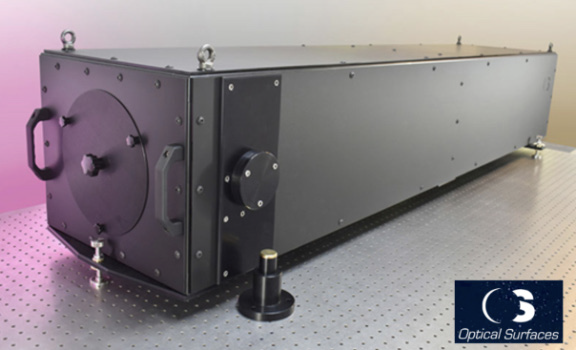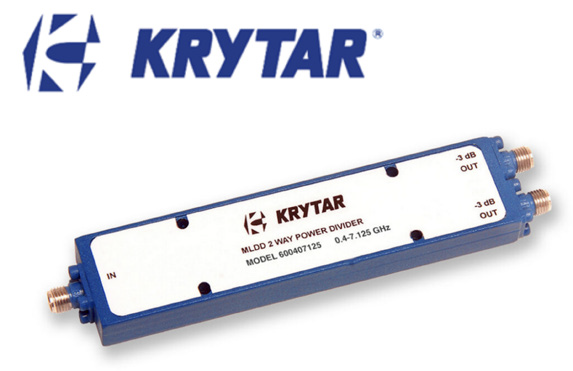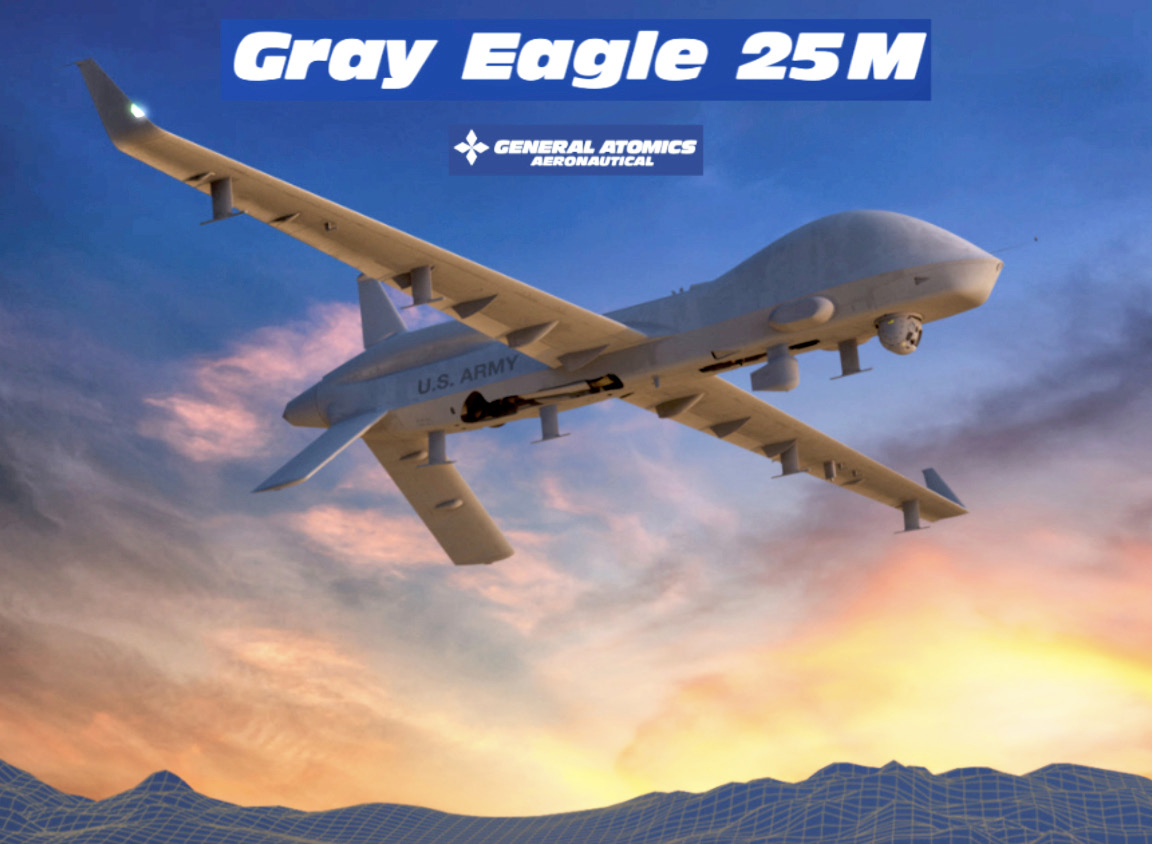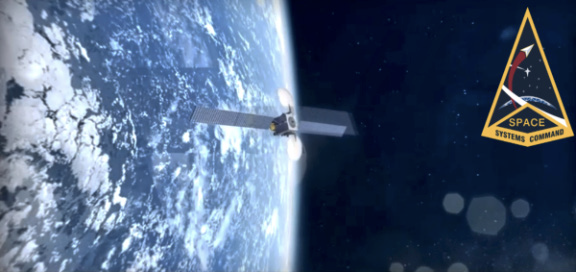Opportunity Announcement: Space Development Agency
The Space Development Agency (SDA) has released a new type of solicitation using other transaction authority (OTA) to select a pool of potential performers called the Hybrid Acquisition for Proliferated LEO or HALO — those selected to join the HALO pool will be eligible to compete for future demonstration prototype orders. HALO is an acquisition approach to solicit and award rapid, affordable mission feasibility demonstrations.

This solicitation provides an opportunity for industry to join a vendor pool to compete for specific on-orbit demonstration opportunities. Only vendors in the HALO pool will be able to bid against specific future prototype orders geared toward this effort, with the anticipation of multiple prototype orders being initiated and awarded per year.
A key goal of HALO is to put in place a flexible and fast contracting mechanism to compete and award Tranche 2 Demonstration and Experimentation System (T2DES) and other SDA demonstration projects. HALO may also increase the pool of performers capable of bidding on future SDA programs, including participation in layers of future tranches.
HALO will provide opportunities for companies to gain valuable experience working with SDA on demonstration projects. HALO pool members will also be able to work directly with SDA to ensure their security capabilities are sufficient to perform on SDA missions. HALO is structured as a multiple step competition, with initial selection into the HALO pool limited to non-traditional defense contractors. SDA is expecting multiple initial pool members and intends to review the pool periodically.
For more information on the HALO pool requirements for mission success and representative prototype orders, view the full solicitation at this direct link. Initial pro osals to join the HALO pool are due by 12:00 pm ET on July 11, 2024.
High stability beam collimators for military optics testing
Optical Surfaces Ltd. has supplied two reflective beam collimators to a leading European supplier of high precision optics to military and defence contractors.

Reflective beam collimators are mirror assemblies that take divergent or convergent incoming light and produce parallel output
They can be used to replicate a target at infinity without parallax. Consequently, reflective beam collimators are the device of choice for performing Modulation Transfer Function (MTF) measurements over extended wavelength ranges.
Benefiting from a lightweight design and new assembly technique — Optical Surfaces beam collimators uniquely combine high stability, high performance, and short delivery time all at a market competitive price.
The company’s ISO 9001-2015 approved manufacturing workshops and test facilities are deep underground in a series of tunnels excavated in solid chalk.
This provides an environment where temperature is naturally thermally stable, and vibration is extremely low.
With such stable conditions testing of all beam collimators becomes quantifiable and dependable
In addition to these natural advantages, Optical Surfaces Ltd. has invested in an extensive range of test equipment and uses trusted methods to ensure accurate and reliable testing of surface accuracy, quality, and slope errors.
Dr. Aris Kouris, Sales Director of Optical Surfaces Ltd., said, “MTF is a technique, trusted by optical designers, for objectively evaluating the image-forming capability of military optical systems. We were chosen as a partner for this project because of our track record in supplying affordable, high performance beam collimators tailored to enable precise MTF testing of military optical systems.”
He added “The high stability and performance of our reflective beam collimators is achieved using a zero expansion off-axis parabolic mirror, manufactured to better than lambda/10 p-v surface accuracy. The all-reflecting design of our beam collimators is achromatic and with aluminium / magnesium fluoride coatings can operate from the UV to the infrared without adjustment. The optics within each beam collimator are secured using stress-free mounts and come pre-aligned for optimum performance. The off-axis design of our beam collimators produces no central obscuration thereby ensuring highly efficient transmission is obtained.”
KRYTAR intros a compact matched-line directional divider
KRYTAR, Inc. has introduced an MLDD 2-way Power Divider that excellent performance over the frequency range of 0.4 to 7.125 GHz (L- through C-bands) in a compact package — this new power divider offers the ultimate solution for emerging designs and test and measurement applications including SATCOM, mmWave, 5G, radar and more.

KRYTAR’s technological advances provide excellent operating performance of this new 2-way matched-line directional divider (MLDD). Model 600407125 covers the full frequency range from 0.4 to 7.125 GHz with >15.0 dB Isolation and ±0.2 dB of maximum Amplitude Tracking, with maximum Phase Tracking of ±3 degrees.
The 2-way divider exhibits Insertion Loss of <1.0 dB across the full frequency range. Maximum VSWR is 1.6. Input power rating is 10 watts with 2:1 load VSWRs. Units with tighter Amplitude and Phase Tracking specifications can be supplied.
This new Power Divider is a compact package measuring just 7.75 inches (L) x 1.00 inches (W) x 0.52 inches (H), weighs only 7-ounces, and comes with standard 3.5-mm coaxial female connectors.
Specifications for the full line of KRYTAR 2-Way Power Dividers can be found on the company’s website: Power Dividers
KRYTAR’s new Model 600407125 Power Divider offers full frequency coverage in a single package and provides superior performance targeting broadband electronic warfare (EW) systems and complex switch-matrix applications.
KRYTAR has used its proprietary design to produce a wide assortment of matched-line directional dividers (MLDD) with excellent performance over ultra- broadband frequencies. KRYTAR MLDD 2-way Power Dividers are a new class of patented directional devices. These directional dividers can be manufactured to meet ridged military specifications.
KRYTAR also offers complete engineering services for custom designs that meet or exceed critical performance and/or packaging specifications. A data sheet with specifications and package outline drawing is available via KRYTAR’s website.
GMV to supply the new space surveillance system for Spain’s Ministry of Defense
Spain’s Ministry of Defense, through its Directorate General of Weapons and Material, has awarded a €2.7 million contract to the multinational technology firm GMV, for development, implementation, and support and maintenance of the Space Situational Awareness and Control System (CCSE) that will be used at the Space Surveillance Operations Center (COVE).

That center, which is operated by the Ministry of Defense (MINISDEF) as part of the Space Command (MESPA) of the Spanish Air and Space Force (EA), was created on November 28, 2019, by Ministerial Resolution 702/18699/19 (Official MoD Gazette no. 233).
Since then, the center’s capabilities have been in a state of ongoing development, to achieve its space surveillance and situational awareness mission, and to provide operational support services for the Spanish Armed Forces. The center reached its initial operational capability (IOC) on July 14, 2021.
GMV has been providing support to this center from the beginning, which has in turn been assisting the U.S. Space Command with its Global Sentinel exercises. As part of its support, GMV has supplied its operational orbit determination tool known as Sstod, for processing space surveillance radar measurements at the Morón Air Base near the Spanish city of Seville.
To help the center achieve full operational capability (FOC), the Spanish Ministry of Defense’s Sub-Directorate General of Procurement, which is part of its Directorate General of Weapons and Material, announced a competitive tendering process at the end of 2023 for a Space Situational Awareness and Control System (CCSE), and GMV has been awarded the contract.
The functionalities covered by this contract include orbit calculation and propagation, generation, and maintenance of a space object catalog (with open and classified versions), prediction of atmospheric reentry, calculation of flyby events, planning of observation and sensor calibration campaigns, calculation of Global Navigation Satellite System signal degradation, and integration and processing of space weather data.
This system is expected to go into service at the end of 2024. To comply with this timeline, the system will be based on GMV’s Commercial Off-The- Shelf (COTS) system known as Ecosstm, which is already being used in other operational environments such as the German Armed Forces Space Situational Awareness Center (Weltraumlagezentrum), the civilian space surveillance systems of various other countries such as Greece, and GMV’s commercial space surveillance center known as Focusoc.
With this new contract, GMV is further solidifying its position as a European leader in the development of space surveillance and command and control systems, which is an area where the company already has experience in both (institutional and commercial) and military applications.
GA-ASI contracted to build + field 1st Gray Eagle 25M for Army National Guard
General Atomics Aeronautical Systems, Inc. (GA-ASI) has announced that the Army National Guard (ARNG) has ordered 12 Gray Eagle 25M (GE 25M) Unmanned Aircraft Systems (UAS) paid for as part of 2023 congressional funding.

The funding comes after ARNG leaders, which make up 45 percent of the U.S. Army’s combat divisions, requested GE 25Ms to make ARNG Divisions mirror the active component in being Multi-Domain Operations (MDO) capable, deployable, and better able to team with newly formed Division Artillery Brigades (DIVARTY). They will also be available to support domestic missions, such as homeland defense and disaster response, as needed.
GE 25M is a modernized model of the Gray Eagle designed to meet the U.S. Army’s needs for MDO capability for both active duty and National Guard units. GE 25M is equipped with the new EagleEye multi-mode radar and electro-optical/infrared sensors, and can host a wide range of additional kinetic and non-kinetic payloads.
Equipping ARNG Divisions with organic GE 25Ms makes possible the necessary mission planning, targeting, communications, detailed coordination, and realistic training needed to employ the systems successfully in combat. GE 25M will allow ARNG Divisions to have Divisional Reconnaissance, Surveillance, and Target Acquisition (RSTA) for the first time. GE 25M flew its maiden flight on December 5, 2023, following the award of an undefinitized contract award announced on Dec. 1, 2023, for the Gray Eagle 25M Production Representative Test Aircraft.
“The Gray Eagle platform has a proven record of performance with over a million hours of safe operations, including automatic takeoff and landing capability,” said GA-ASI Vice President of DoD Strategic Development Patrick Shortsleeve. “The aircraft excels as an enabler for Fires, Maneuver, Network, and Intelligence operations. It is also an integral part of the Army Aviation team, working closely with manned rotary-wing systems to achieve overmatch against pacing threats.”
Space Systems Command awards million$$ to Starfish Space Inc.
Space Systems Command (SSC) recently awarded Starfish Space a $37.5 million Strategic Funding Increase (STRATFI) contract to build, launch, and operate an Otter satellite vehicle for a first-of-its-kind docking mission designed to provide two years of augmented maneuver for National Security Space assets.

Through partnership with Air Force Research Laboratory’s (AFRL) SpaceWERX Program, Starfish Space, Space Safari, and SSC Commercial Space Office,
SSC’s Assured Access to Space organization has expanded efforts to improve responsiveness, resilience and strategic flexibility of U.S. assets on-orbit; game-changing innovation and capabilities to win in today’s Great Power Competition.
The Otter spacecraft will be capable of performing autonomous rendezvous, proximity operations, and docking (RPOD), compatible with a wide range of clients, including those that were never designed or configured for docking. This capability gives the U.S. Space Force a range of options to support existing assets and allow future assets to be supported without imposing additional configuration requirements.
Advancing flexible RPOD capabilities with scalable architectures such as the Otter is critical to the development of various Space Mobility and Logistics missions in support of
the warfighter. This effort builds on previous Small Business Innovative Research (SBIR) efforts, advancing early Research & Development efforts to viable capabilities.
Unique to the Department of the Air Force, the STRATFI (Strategic Funding Increase) program provides additional funds to scale Phase II SBIR efforts to achieve better technology transfer. STRATFI is structured to leverage private capital investment as a matching source of funds, with periods of performance up to four years, in order to de-risk development of emerging technology and transition research and development work into operational capabilities.
“This project is another step forward in delivering what our warfighters require in sustained space maneuver,” said Col. Joyce Bulson, Director, Servicing, Mobility, and Logistics within AATS. “For a particular class of spacecraft with particular mission sets in GEO, refueling may be the answer to sustaining maneuver; for other systems, augmented maneuver options may be the solution. There is a wide range of applications for Starfish Space’s Otter in addition to augmented maneuver, such as station-keeping or life extension, orbital transfer, and ultimately orbital disposal which assures access to key orbital slots while demonstrating responsible norms in space.”


